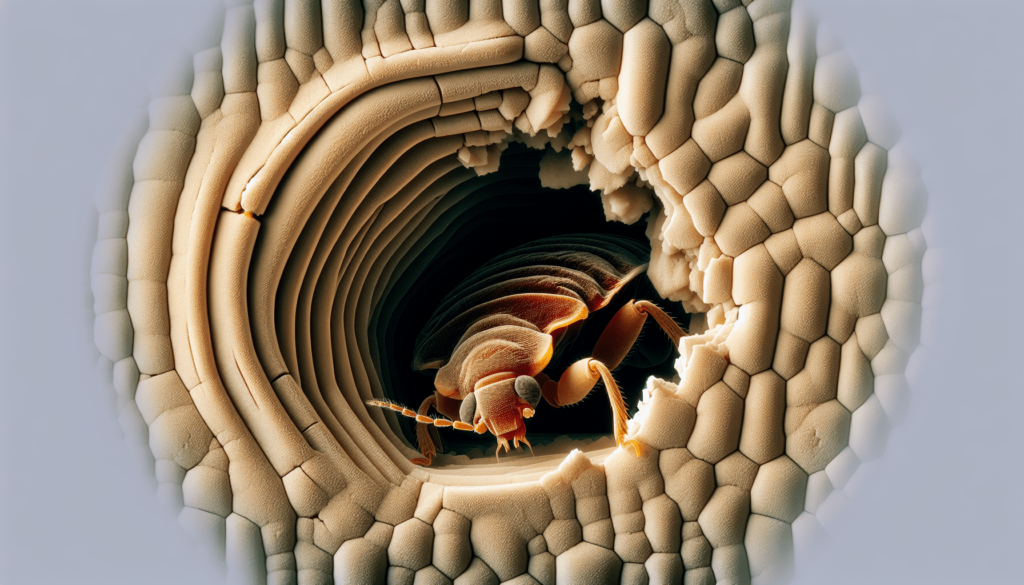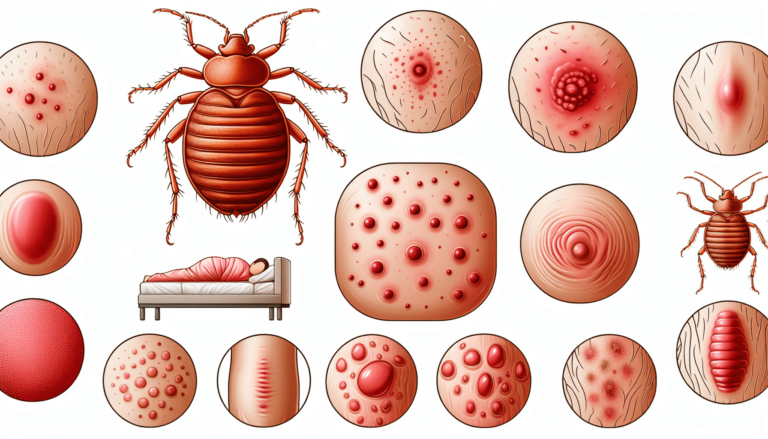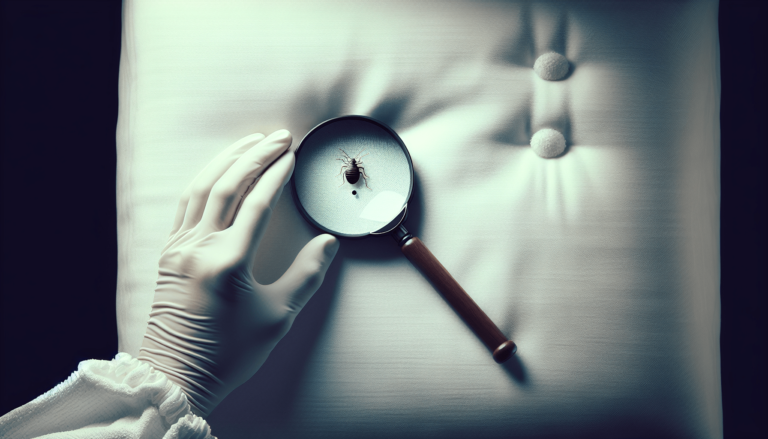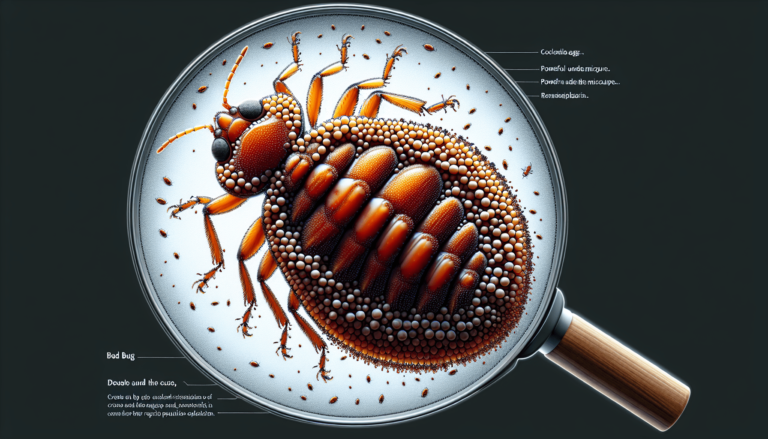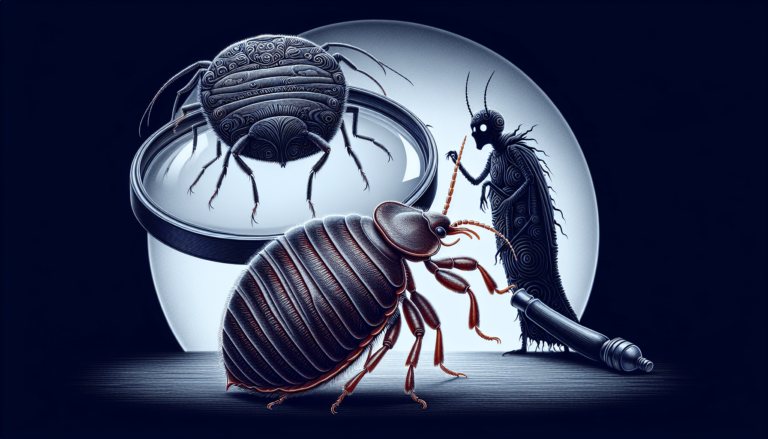The Ultimate Guide: What Attracts Bed Bugs and How to Prevent Them
This comprehensive guide aims to provide you with valuable insights into what attracts bed bugs and how to effectively prevent infestations. Bed bugs, small parasitic insects that feed on human blood, are attracted to various factors such as body heat, carbon dioxide emissions, and certain scents. They are also known to be highly skilled hitchhikers, frequently traveling on luggage, clothing, or furniture. Understanding these factors and taking appropriate preventive measures is crucial to ensure a pest-free environment. By following the expert advice and practical solutions presented in this article, you will be empowered to safeguard your home and personal space from these persistent pests.
Understanding Bed Bugs
Bed bugs are small, reddish-brown insects that are parasitic and feed on the blood of humans and other warm-blooded animals. They are typically about the size of an apple seed and have a flat, oval-shaped body. Despite their name, bed bugs can be found in various places, not just beds. Understanding their characteristics, life cycle, and feeding habits is crucial in preventing and managing infestations.
Characteristics of bed bugs
Bed bugs have several distinguishing characteristics that set them apart from other pests. They have a flattened body, which allows them to easily hide in cracks and crevices. They are wingless and cannot fly, but they can crawl quickly over surfaces. Bed bugs are attracted to warmth and carbon dioxide, which is why they are commonly found near areas where people rest or sleep.
Life cycle of bed bugs
Understanding the life cycle of bed bugs is essential in effectively controlling an infestation. Bed bugs undergo a process called metamorphosis, which means they go through several stages of development before reaching adulthood. They start as eggs, which are tiny and difficult to see with the naked eye. The eggs hatch into nymphs, which are immature bed bugs. Nymphs go through several molts as they grow, shedding their exoskeleton and getting larger each time. Finally, the nymphs develop into adult bed bugs, capable of reproducing and causing infestations.
Feeding habits of bed bugs
bed bugs rely on blood as their sole source of nutrition. They are nocturnal insects and prefer to feed on their unsuspecting hosts while they are asleep. The bugs use their sharp mouthparts to pierce the skin and extract blood, leaving behind small, red itchy welts. Bed bugs are attracted to the carbon dioxide and body heat emitted by humans, making them most likely to feed on people who are sleeping or resting. They are capable of going several months without feeding, but will seek out a blood meal when hungry.
Factors That Attract Bed Bugs
Understanding the factors that attract bed bugs can help in preventing infestations and reducing the risk of bites. While bed bugs are not necessarily attracted to dirt or filth, certain conditions and factors make an environment more favorable for them.
The attraction to human warmth and carbon dioxide
One of the main factors that attract bed bugs is human warmth and the carbon dioxide we emit. Bed bugs are attracted to the heat and carbon dioxide produced by our bodies, as it signals a potential food source. This is why they are commonly found in areas where people spend a lot of time resting or sleeping, such as beds, sofas, and recliners.
Cleanliness and clutter
Contrary to popular belief, bed bugs do not discriminate based on cleanliness. They can infest both clean and dirty environments. However, cluttered spaces provide more hiding spots for bed bugs and make it harder to detect and eliminate them. Clearing clutter and maintaining a clean living space can help reduce the risk of infestations.
The nature of materials
Bed bugs are excellent hitchhikers and can easily travel from one location to another by hiding in materials such as clothing, luggage, furniture, and bedding. They can also move between units in multi-unit buildings through shared piping and wiring. The nature of these materials and their interconnectedness can contribute to the spread of bed bugs, making it important to be cautious when acquiring used furniture or staying in accommodations with a history of infestations.
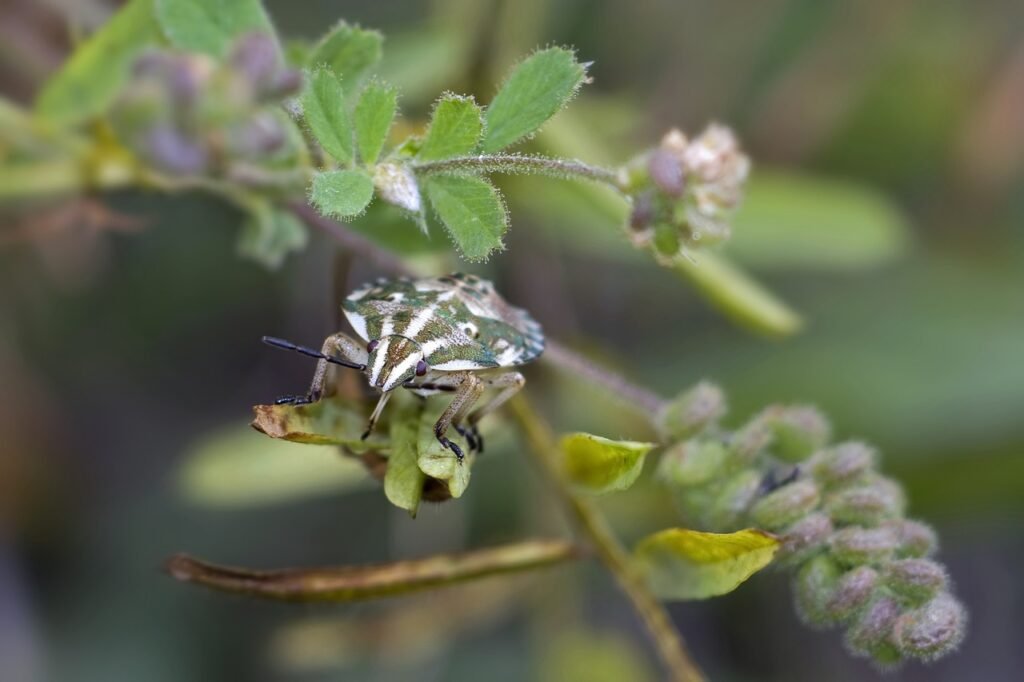
This image is property of pixabay.com.
Bed Bug Habitats
Understanding the typical dwelling places of bed bugs is essential in identifying and addressing an infestation. While bed bugs are commonly associated with beds, they can be found in various locations.
Typical dwelling places of bed bugs
Bed bugs prefer to hide in dark, secluded areas during the day and come out at night to feed. They are often found in and around mattresses, box springs, bed frames, and headboards. Other common hiding spots include cracks and crevices in walls, furniture, baseboards, and electrical outlets. Bed bugs can also be found in upholstered furniture, curtains, and even behind peeling wallpaper.
Travel and relocation of bed bugs
Bed bugs are not limited to just one location and can easily travel with people from one place to another. They can infest luggage, clothing, and other personal belongings, making them a common problem in hotels, motels, and other travel accommodations. It is important to be vigilant and inspect for signs of infestation when staying in unfamiliar places or bringing used furniture into your home.
Seasonal behaviors
Bed bugs are not influenced by seasonal changes like some other pests. They can survive in a wide range of temperatures and continue to reproduce year-round. However, certain times of the year, such as warmer months when people are traveling more, can contribute to an increase in bed bug infestations. Being aware of these seasonal behaviors can help in preventing and managing infestations.
Identification Of Bed Bug Infestation
Early identification of a bed bug infestation is crucial in preventing it from spreading and causing further problems. There are several signs to look out for when suspecting a bed bug infestation.
Physical signs of bed bugs
Bed bugs leave behind physical signs that can indicate their presence. These include dark spots or stains on bedding or furniture, which are fecal matter left behind by the bugs. You may also notice small, reddish-brown spots on sheets or mattresses, which are blood stains from bed bug bites. Finally, shed bed bug skins, eggshells, or live bed bugs themselves may be found in and around hiding spots.
Symptoms of bed bug bites
Bed bug bites can cause a range of reactions in individuals. Some people may not have any noticeable symptoms, while others may experience red, itchy welts or small raised bumps. The bites are often arranged in a linear or clustered pattern, as bed bugs tend to feed in multiple areas. If you suspect bed bug bites, it is important to seek medical attention for proper diagnosis and treatment.
Using bed bug detectors and monitors
To confirm the presence of bed bugs, you can use various detection methods. Bed bug detectors and monitors are designed to attract and capture bed bugs, allowing you to identify if an infestation is present. These devices can be placed near sleeping areas or suspected hiding spots, and they work by luring bed bugs in with heat, carbon dioxide, or other attractants.

This image is property of pixabay.com.
Health Risks Associated with Bed Bugs
While bed bugs are not known to transmit diseases, they can still cause several health issues and psychological effects. Understanding these risks is crucial in managing and preventing infestations.
Common health issues related to bed bugs
Bed bug bites can lead to various health issues, both physical and psychological. Some people may experience allergic reactions to the bites, which can result in severe itching, swelling, and even anaphylaxis in rare cases. The constant disruption of sleep due to bed bug bites and the stress associated with an infestation can also lead to fatigue, anxiety, and other mental health issues.
Psychological effects of infestation
Bed bug infestations can have a significant impact on mental health and well-being. The constant fear and anxiety of being bitten can cause sleep disturbances, stress, and even paranoia. The stigma associated with bed bugs can also lead to feelings of shame and embarrassment, further exacerbating the psychological effects of infestation.
Risk of skin infection and allergies
Scratching bed bug bites can break the skin and increase the risk of infection. Additionally, some individuals may develop a skin allergy known as papular urticaria, which causes a more severe reaction to bed bug bites. It is important to seek medical attention if you suspect an infection or have an allergic reaction to bed bug bites.
Managing Bed Bug Infestations
If you discover a bed bug infestation, it is important to take immediate action to prevent the problem from worsening. There are both do-it-yourself methods and professional pest control services available for managing bed bug infestations.
DIY methods for bed bug control
There are several steps you can take to control a bed bug infestation on your own. Start by thoroughly cleaning and decluttering the affected areas, as this will make it easier to detect and eliminate the bugs. Vacuuming regularly and using hot water to wash bedding and clothing can help in killing bed bugs and removing their eggs. It is also important to seal cracks and crevices, repair any damaged furniture, and use mattress and box spring encasements to trap bed bugs.
Choosing professional pest control services
While DIY methods can be effective for small infestations, larger or more severe infestations may require professional intervention. Pest control professionals have the experience and knowledge to effectively identify and treat bed bug infestations. They may use a combination of methods such as heat treatments, insecticide sprays, and fumigation to eliminate bed bugs and prevent future infestations.
Understanding the process of bed bug treatment
Regardless of whether you choose to tackle the infestation yourself or hire professionals, it is important to understand the process of bed bug treatment. Effective treatment involves multiple steps, including thorough inspection, identification of hiding spots, treatment of infested areas, and ongoing monitoring to ensure complete eradication. It is important to follow the instructions provided by professionals or carefully read and follow the labels of any do-it-yourself products.

This image is property of pixabay.com.
High-Risk Places for Bed Bug Infestations
Bed bugs can be found in a variety of environments and locations. Knowing the high-risk places for bed bug infestations can help in taking preventative measures and reducing the risk of bringing them into your home or workplace.
Bed bugs and travel accommodations
Hotels, motels, and other travel accommodations are common hotspots for bed bug infestations. With the constant flow of guests and the high turnover rate of rooms, it is important to thoroughly inspect your accommodations before settling in. Check the mattress, headboard, and surrounding areas for signs of infestation and consider using bed bug protective encasements for added protection.
Potential bed bug threats in public places
Public places with high levels of human activity can also pose a risk for bed bug infestations. Movie theaters, libraries, schools, and office buildings are examples of places where bed bugs can be easily transported and spread. Taking precautions such as keeping personal belongings off the floor, using coat hooks rather than placing coats on shared surfaces, and being vigilant for signs of infestations can reduce the risk of bringing bed bugs home.
Infestations in residential and apartment complexes
Bed bug infestations can occur in residential settings, including single-family homes, apartments, and condominiums. In multi-unit buildings, bed bugs can easily travel from one unit to another through shared walls, ceilings, and plumbing. Cooperation and communication between residents, landlords, and property management are essential in preventing and addressing infestations. Regular inspections and prompt treatment can help minimize the spread of bed bugs within residential complexes.
Preventive Measures Against Bed Bugs
Taking proactive measures to prevent bed bug infestations is essential in maintaining a pest-free living environment. By following a few simple steps, you can significantly reduce the risk of encountering bed bugs.
Keeping a clean living space
Regular cleaning and decluttering of your living space can help in preventing bed bug infestations. Vacuuming carpets, cracks, and crevices regularly can remove any stray bed bugs or eggs. Laundering bedding, curtains, and clothing in hot water and regularly inspecting furniture for signs of infestation are also important preventative measures.
Choosing the right furniture and furnishings
When acquiring new furniture or furnishings, it is crucial to be cautious and inspect them for signs of bed bugs. Avoid acquiring used furniture from unknown sources, as it may be infested. If purchasing second-hand items, thoroughly inspect them before bringing them into your home. Consider using mattress and box spring encasements, which can help prevent bed bugs from infesting these items.
Educating oneself about bed bugs while traveling
Traveling can increase the risks of encountering bed bugs. Before embarking on a trip, educate yourself about bed bug prevention and inspection techniques. Pack your belongings in sealed plastic bags, keeping them off the floor and away from upholstered furniture. Upon returning home, inspect your luggage, clothing, and personal items before bringing them indoors.
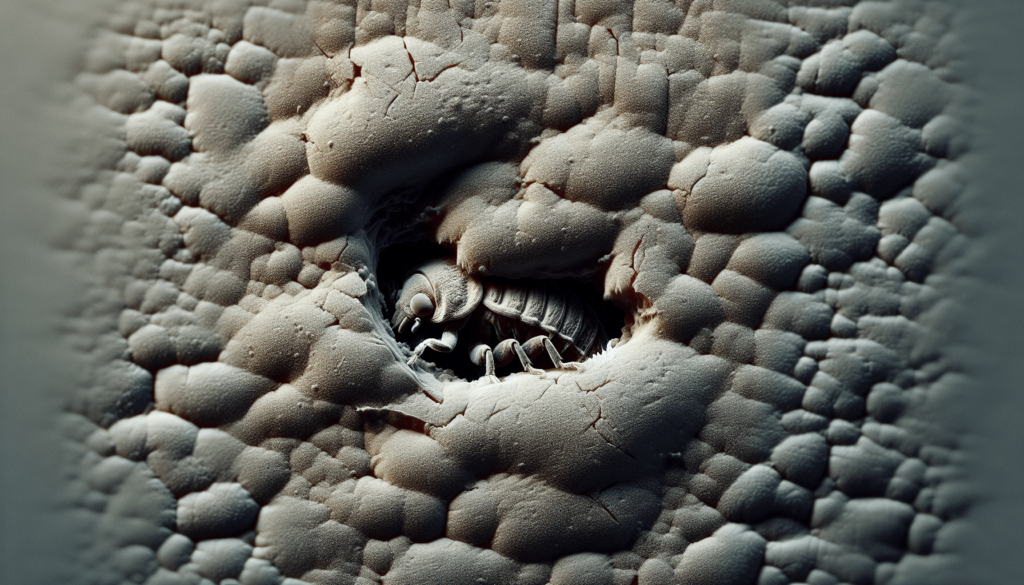
Bed Bug Awareness and Responsibilities
Raising awareness about bed bugs and understanding the responsibilities of different parties can play a crucial role in preventing and managing infestations.
The importance of community cooperation
Bed bug infestations can affect entire communities, not just individual households. Recognizing the importance of community cooperation in preventing and managing infestations is essential. Sharing information about outbreaks, treatment methods, and prevention strategies can help in creating a united front against bed bugs. Engaging in open dialogue and supporting one another during an infestation can lead to more effective efforts in eradicating bed bugs.
Landlord and tenant obligations
In rental properties, the responsibility for preventing and treating bed bug infestations may vary depending on local regulations and lease agreements. Landlords generally have an obligation to provide habitable living conditions, which includes addressing bed bug infestations. Tenants, on the other hand, are responsible for maintaining cleanliness and reporting any signs of infestations to the landlord promptly. Understanding these obligations is crucial for both landlords and tenants in effectively managing bed bug infestations.
Schools and workplaces
Schools and workplaces can also experience bed bug infestations, posing challenges for both students and employees. Education institutions and employers should prioritize preventative measures, such as regular inspections and awareness campaigns. Prompt action, including professional treatment if necessary, can help in minimizing the impact of bed bugs on the learning and working environment.
Future Of Bed Bug Management
As the understanding of bed bugs and their behaviors evolves, so does the approach to managing infestations. Several emerging trends, advancements in science and technology, and changes in public policies and regulations are shaping the future of bed bug management.
Emerging trends in bed bug control
Bed bug control methods are continuously evolving to keep up with the ever-adapting pests. Researchers are exploring novel solutions such as biopesticides, trapping techniques, and insect growth regulators. Heat treatments and the use of controlled atmospheres are also gaining popularity as effective bed bug extermination methods.
Role of science and technology
Advancements in science and technology are revolutionizing bed bug management. Pest control companies are utilizing specialized equipment such as heat chambers, vacuums, and portable heaters to eliminate infestations more efficiently. The development of bed bug-detecting dogs and advanced monitoring systems is making early detection and targeted treatments more feasible.
Changes in public policies and regulations
The increased awareness and impact of bed bug infestations have prompted changes in public policies and regulations. Many jurisdictions now have specific guidelines for landlords, hotels, and other establishments to follow regarding bed bug prevention, treatment, and reporting. Stricter regulations and enforcement aim to protect individuals and communities from the negative effects of bed bug infestations.
In conclusion, understanding bed bugs and the factors that attract them is crucial in preventing and managing infestations. By familiarizing yourself with their characteristics, feeding habits, and typical habitats, you can take proactive measures to reduce the risk of encounters. Identifying the signs of infestations and understanding the associated health risks allows for prompt intervention and treatment. Whether through DIY methods or professional pest control services, managing bed bug infestations requires a comprehensive approach. By taking preventive measures, understanding high-risk places for infestations, and promoting community cooperation, we can work towards a future with fewer bed bug problems. With emerging trends, advancements in science and technology, and changes in public policies, the management of bed bugs continues to evolve, offering more effective and efficient solutions.
